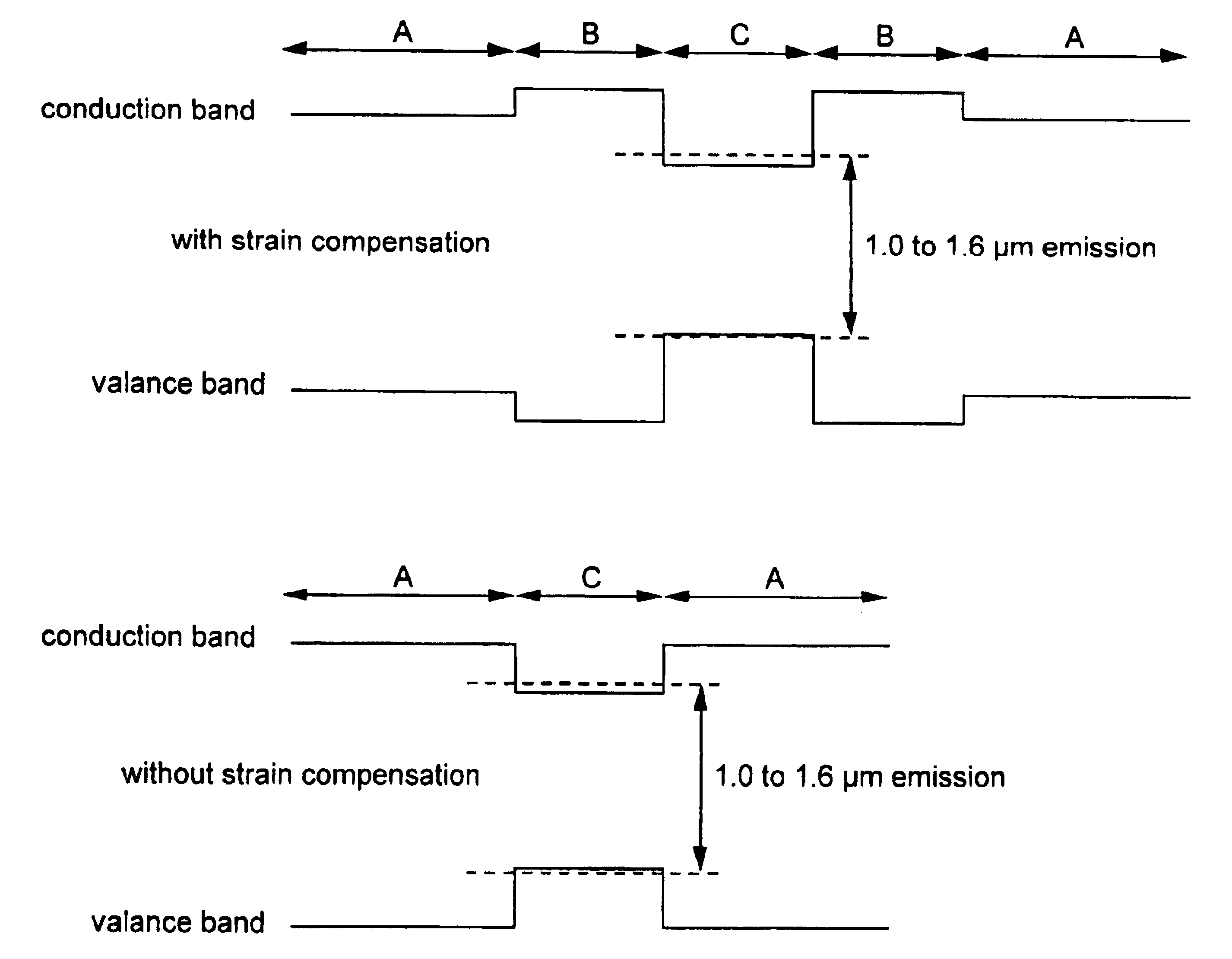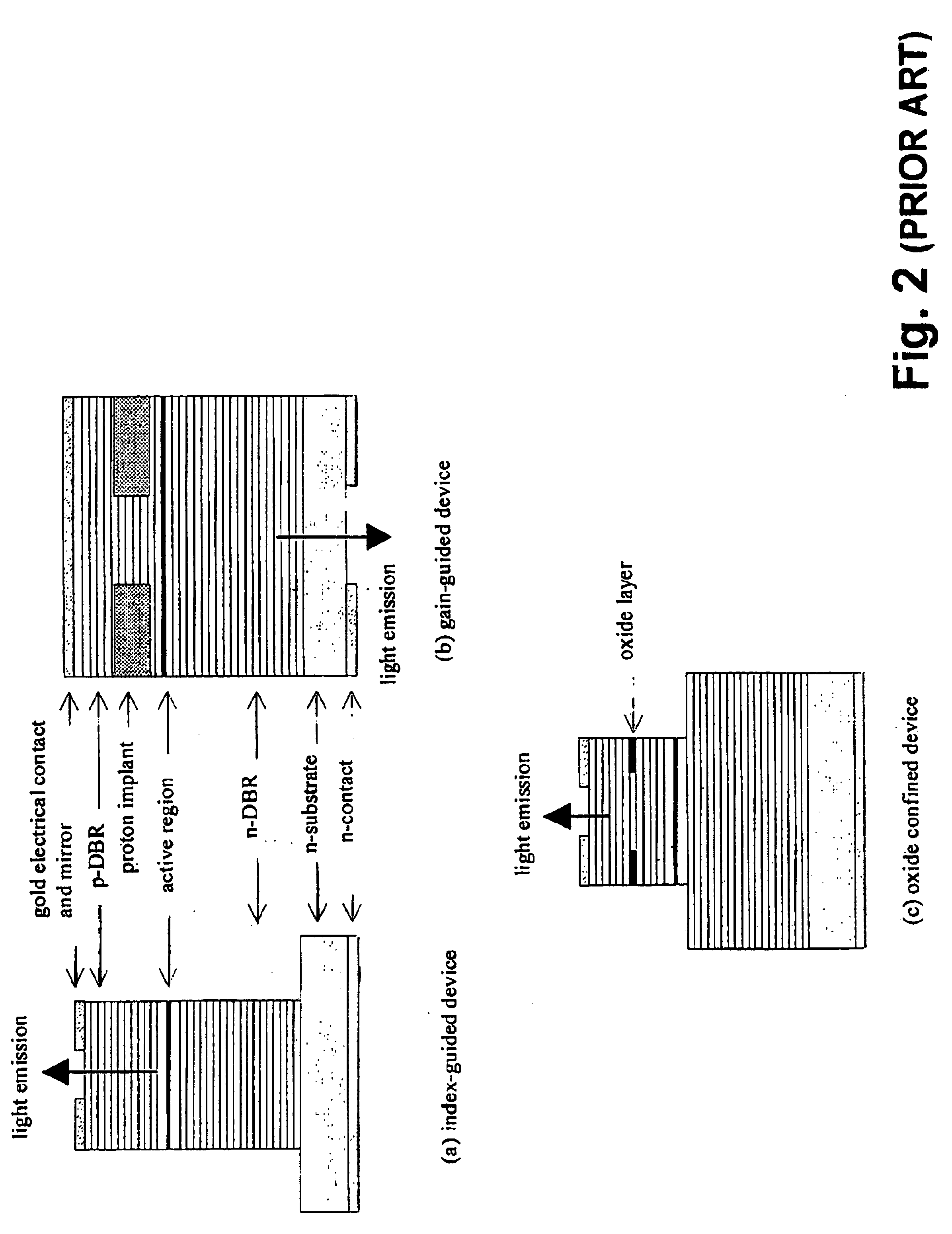Long wavelength pseudomorphic InGaNPAsSb type-I and type-II active layers for the gaas material system
a material system and active layer technology, applied in the field of vertical cavity surfaceemitting lasers, can solve the problems of poor crystal quality and compressive stain in layers grown on gaas, and achieve the effects of reducing the transition energy, and increasing the efficiency of a quantum-well containing structur
- Summary
- Abstract
- Description
- Claims
- Application Information
AI Technical Summary
Benefits of technology
Problems solved by technology
Method used
Image
Examples
Embodiment Construction
Through the use of strained InwGa1-wNxPyAszSb1-x-y-z / AlpGa1-pAs / GaAs heterostructures, the present invention's material system comprises: 1) Compressively strained InwGa1-wNxPyAszSb1-x-y-z quantum wells and tensile strained AlqGa1-qNrPsAs1-r-s barrier layers with a type-I band alignment; and 2) Compressively strained quantum wells utilizing multiple InwGa1-wNxPyAszSb1-x-y-z / InaGa1-aNbAs1-b layers with a type-II band alignment and tensile strained AlqGa1-qNrPsAs1-r-s barrier layers. Both material systems are grown pseudomorphically on GaAs substrates. As used herein, “pseudomorphic” shall mean having a sufficiently low density of misfit dislocations allowing for the production of lasers having sufficiently long lifetimes. Both type-I and type-II band-edge alignments are utilized in the present invention.
Light emission or absorption at wavelengths 1.0 μm to 1.6 μm are achieved by the present invention by using single or multiple combinations of active materials grown on material A, wi...
PUM
 Login to View More
Login to View More Abstract
Description
Claims
Application Information
 Login to View More
Login to View More - R&D
- Intellectual Property
- Life Sciences
- Materials
- Tech Scout
- Unparalleled Data Quality
- Higher Quality Content
- 60% Fewer Hallucinations
Browse by: Latest US Patents, China's latest patents, Technical Efficacy Thesaurus, Application Domain, Technology Topic, Popular Technical Reports.
© 2025 PatSnap. All rights reserved.Legal|Privacy policy|Modern Slavery Act Transparency Statement|Sitemap|About US| Contact US: help@patsnap.com



